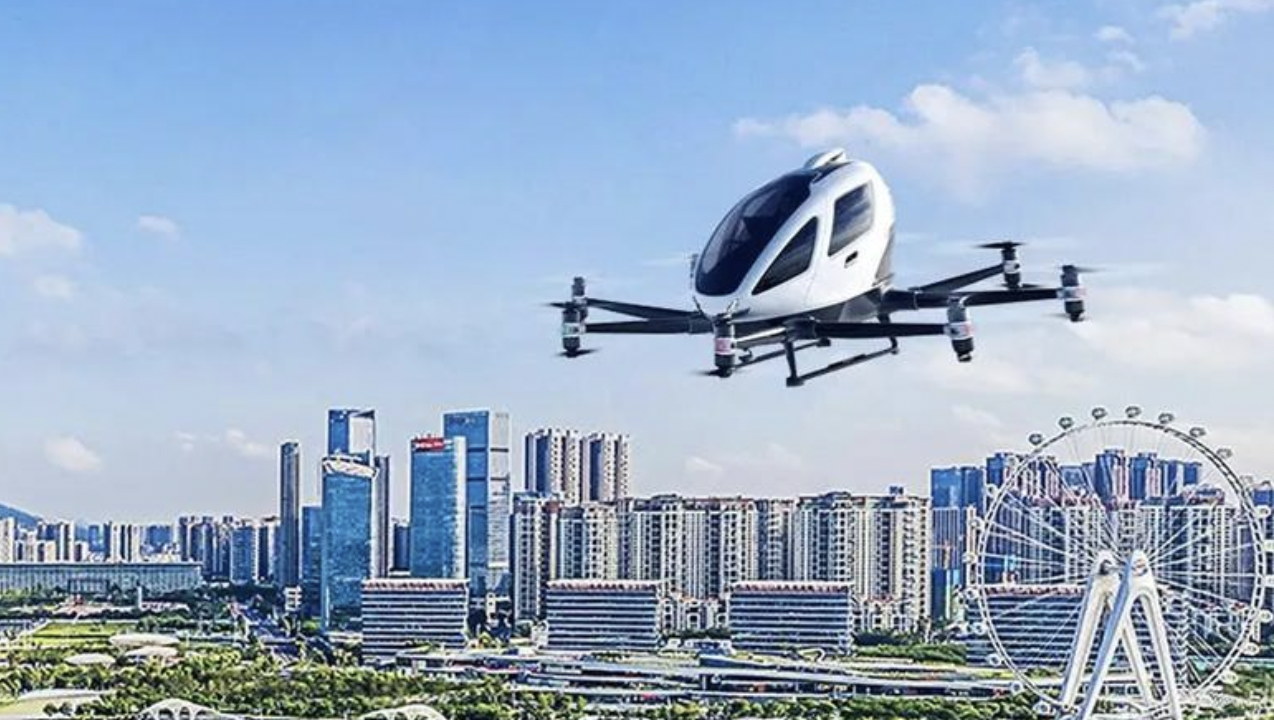
On July 4th, the High-Quality Development Conference of the Low-Altitude Economy in Guangdong was held in Guangzhou. The conference revealed that Guangdong is leveraging its robust industrial foundation to actively seize opportunities in the low-altitude economy sector, aiming to become a global leader and pioneer in this burgeoning industry.

UAVs delivering food between skyscrapers, “air taxis” becoming a new travel option, and agricultural UAVs working efficiently in fields—these are no longer just futuristic ideas. In recent years, the low-altitude economy has been rapidly integrated into various industries, from consumer scenarios like delivery and tourism to production scenarios such as power inspections and agricultural protection. The UAV market size is expanding swiftly, becoming a new driving force for future industrial development. It is predicted that by 2025, China's market size for the low-altitude economy will reach 1.5 trillion yuan.
As an emerging strategic industry, the low-altitude economy is a typical representation of new quality productive forces as well as a critical direction for fostering new growth drivers. Industry experts highlight that the low-altitude economy, with its broad reach, extensive industrial chain, and strong growth and driving potential, holds vast potential in stimulating effective investment, creating consumer demand, and enhancing innovation capabilities. Moreover, developing the low-altitude economy is crucial for activating three-dimensional space resources, providing efficient public services, transforming ways of life and production, spawning new ecosystems through cross-industry integration, creating new economic growth engines, and accelerating the formation of new quality productive forces.
Guangdong, as a national innovation hub, has astutely captured the strategic opportunities in this new field and stands at the forefront of the low-altitude economy, incorporating relevant initiatives into its government work reports.
Currently, the deployment of the low-altitude economy is speeding up across the Guangdong-Hongkong-Macao Greater Bay Area. Last year, Shenzhen's annual output value of the low-altitude economy exceeded 90 billion yuan, with 77 drone routes opened and 600,000 cargo drone flights completed, ranking first nationwide in the flight scale. Guangzhou hosts leading many enterprises in the low-altitude industry such as EHang, XPENG AEROHT, and GAC Group, establishing a comprehensive industrial chain encompassing R&D, manufacturing, testing, certification, flight operations, and service support. These impressive figures highlight the vigorous growth of Guangdong's low-altitude economy.
The low-altitude economy needs not only to take off but also to "fly well". The industry's "take-off" relies on the support of drone technology, general aviation aircraft technology, new energy technology, autonomous driving technology, and new generation of information technology. However, we should also recognize that the low-altitude economy brings new challenges to relevant fields such as airspace, regulation, and safety. Particularly as Guangdong's low-altitude economy is still in its early stages, there is a need to improve policy and regulatory frameworks, strengthen supporting measures, and expand application fields.
Looking to the future, Guangdong needs to advance both "soft construction", such as expanding low-altitude application scenarios and building support systems, and "hard investment" in infrastructure to promote the thriving development of the low-altitude economy. Riding the wave of the low-altitude economy, Guangdong is poised to soar to new heights, creating a better life for its people and making the blueprint for "recreating a new Guangdong" more tangible and attainable.
Source :Yangcheng Evening News
快评 | 低空经济“蓄势腾飞” 为广东高质量发展添加新引擎
7月4日,广东省低空经济高质量发展大会在广州举行。会议透露,当前广东正从深厚的产业基础出发,积极抢抓低空经济产业,致力于打造世界领先的低空经济产业高地,力求“领飞”未来。
无人机穿行在高楼大厦间送外卖,“空中的士”有望成为出行新选择,农业无人机在田间地头“大显身手”……近年来,从外卖配送、观光旅游等消费场景到电力巡检、农业植保等生产场景,低空经济产业正加快融入各行各业,市场规模也加速壮大,成为激发未来产业发展的新动能。据预测,到2025年,全国低空经济市场规模将达到1.5万亿元。
作为战略性新兴产业,低空经济是新质生产力的典型代表,更是培育发展新动能的重要方向。业内人士分析,低空经济具有辐射面广、产业链条长、成长性和带动性强等特点,在拉动有效投资、创造消费需求、提升创新能级方面具有广阔空间。此外,发展低空经济对激活立体空间资源、提供高效公共服务、改变生产生活方式、催生跨界融合新生态、打造经济增长新引擎、加快形成新质生产力也具有重要意义。
广东作为全国的创新高地,敏锐地捕捉到了新领域新赛道的战略机遇,在低空经济领域率先布局,将低空经济相关内容写入政府工作报告。
如今,低空经济的布局在大湾区已全面加速。深圳去年低空经济年产值超过900亿元,已开通无人机航线77条,完成载货无人机飞行量60万架次,飞行规模全国第一;广州汇聚亿航智能、小鹏汇天、广汽集团等一批低空行业的龙头企业,搭建起涵盖研发制造、检测认证、飞行运营和服务保障的全产业链……一个个亮眼数据,都显示出广东低空经济产业发展的蓬勃活力。
低空经济,不仅要飞起来,还要“飞得好”。低空经济的“腾飞”离不开无人机、通航飞机等航空器技术和新能源技术、无人驾驶技术、新一代信息技术的支持。同时,我们也清醒地看到,低空经济也给空域、监管、安全等方面带来了全新的挑战。特别是当前广东发展低空经济仍处于起步阶段,仍需在完善政策法规体系、强化配套措施、拓展应用领域等方面进一步发力。
放眼未来,推动低空经济产业振翅高飞,广东既要开展拓展低空应用场景、推动支撑体系建设等方面的“软建设”,也要进行适度超前布局基础设施等方面的“硬投资”。乘着低空经济的东风,一个向空天竞逐的广东正振翅高飞,不仅将为人们创造出更加美好的生活,也让“再造一个新广东”的蓝图更加清晰可见。
文|杨帅
图源|视觉中国
翻译|赵凡
-
First new venue for 2025 National Games officially opens
2024-07-06 22:40:49 -
Summer archaeology workshop: discoveries from five prospective university students in the museum lab
2024-07-06 22:39:48 -
Sipping tea, listening to music: Traditional live houses in old Canton
2024-07-06 13:15:54 -
Poster | Experiencing the Shenzhen-Zhongshan Link makes the one-hour tourism circle of the GBA a hotspot
2024-07-05 20:51:36






